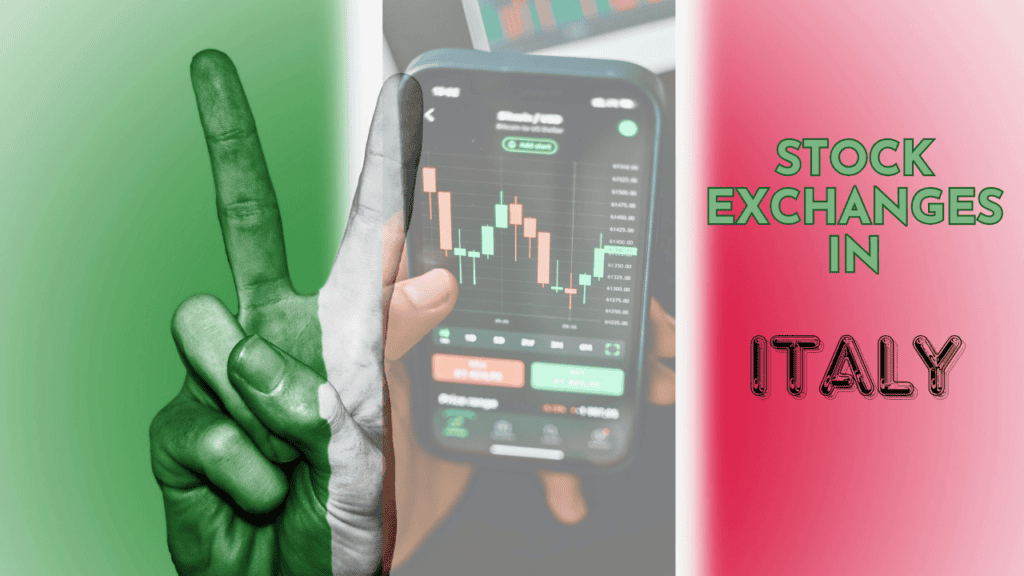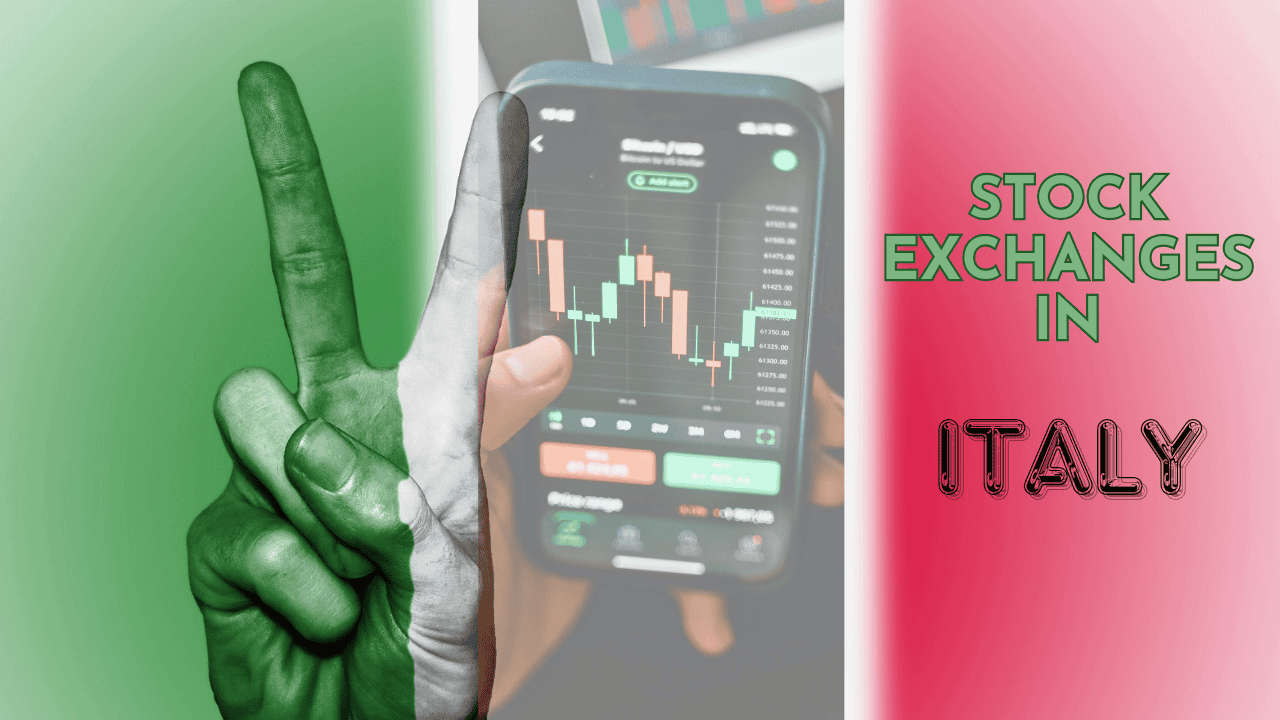Table of Contents

Introduction
Hello friends welcome to moneyorbis.com in this article we will know about all stock exchanges in italy. Italy has one of Europes most dynamic financial landscapes, with several major stock exchanges. The main exchange is the Borsa Italiana, headquartered in Milan, which serves as the focal point for the trading of Italian securities. Founded in 1808, the Borsa Italiana has a rich history and today hosts a diverse range of companies ranging from small-cap to large-cap firms across a variety of sectors. Additionally, Italy has alternative trading platforms such as AIM Italia, dedicated to smaller companies and startups, which promote innovation and entrepreneurship within the Italian market. With a strong regulatory framework and a vibrant investor community, Italy’s stock exchanges play a vital role in the country’s economic development and global financial integration.
List Of Stock Exchanges in Italy
- Borsa Italiana:
- Mercato Telematico Azionario (MTA):
- AIM Italia:
Details About Stock Exchanges in Italy
1. Borsa Italiana:
Borsa Italiana is Italy’s main stock exchange, operating financial markets for equities, derivatives, fixed income and other financial instruments. The main points about Borsa Italiana are:
Market Operator: Borsa Italiana is the main stock exchange operator in Italy, providing trading platforms and infrastructure for various financial instruments.
Ownership: Borsa Italiana was traditionally a standalone exchange but later became part of the larger international exchange group, the London Stock Exchange Group (LSEG). LSEG owns and operates Borsa Italiana as one of its subsidiaries.
Equity Market: The equity market of Borsa Italiana facilitates the trading of shares of Italian and international companies. It includes the main stock index, the FTSE MIB, which tracks the performance of the 40 most traded companies listed on the exchange.
Derivatives market: Borsa Italiana also operates a derivatives market, which provides trading opportunities for futures and options contracts on various asset classes, including equities, indices and commodities.
Fixed Income Market: The fixed income market of Borsa Italiana allows trading in government and corporate bonds, providing a platform for investors looking for fixed income securities.
AIM Italia: Borsa Italia manages AIM Italia, a market segment dedicated to small and growing companies. AIM Italia is similar to other markets focused on small enterprises, providing a platform for these companies to access capital markets.
Technology and Innovation: Borsa Italiana emphasizes technological innovation to enhance its trading platform, data services and market infrastructure while ensuring efficient and transparent trading.
Regulation and Oversight: Borsa Italiana operates under regulatory supervision to ensure compliance with financial rules, market integrity and investor protection.
Market integration: The integration of Borsa Italiana into the London Stock Exchange group has contributed to its international presence and increased access to global capital markets for Italian companies and investors.
2. Mercato Telematico Azionario (MTA):
The Mercato Telematico Azioneario (MTA) is the primary stock market segment of Borsa Italiana, Italy’s main stock exchange. Here are the main points about the Mercato Telemático Azioneario (MTA):
Italian Stock Exchange Segment: The MTA is the primary market segment of Borsa Italiana dedicated to the trading of shares of listed companies.
Main equity market: The MTA serves as the main stock market platform within Borsa Italiana, where large Italian and international companies list their shares for trading.
Market segmentation: Within the MTA, stocks are classified into different segments based on their size and liquidity, such as the Main Segment (MTA), MTA International for non-Italian companies, and Star (Segmento) for high-growth companies. Titoli ad ulti requisiti). Meeting specific criteria.
Listing Requirements: Companies listed on the MTA are subject to specific listing requirements, including financial reporting standards, corporate governance criteria and transparency obligations.
Major Stock Indices: The FTSE MIB Index, which tracks the performance of the 40 most traded companies listed on the Italian Stock Exchange, also includes companies listed on the MTA segment.
Trading Platform: MTA operates as an electronic trading platform, enabling efficient and transparent trading of equities for investors and market participants.
Investor access: The MTA provides investors access to a wide range of Italian and international companies, allowing them to invest in shares of these listed companies.
Market Regulation and Oversight: The MTA operates under regulatory supervision to ensure compliance with financial rules, market integrity and investor protection.
Role in the Italian capital markets: As the primary equity market segment within Borsa Italiana, the MTA plays a key role in facilitating the capital raising activities of listed companies and providing a platform for trading and investment.
The MTA serves as an important platform for companies seeking access to the public capital markets in Italy and for investors trading shares of Italian and international companies listed on the Italian Stock Exchange.
3. AIM Italia:
AIM Italia is a market segment within Borsa Italiano, Italy’s main stock exchange, designed specifically for small and growing companies. The main points about AIM Italia are:
Focus on SMEs: AIM Italia provides small and medium-sized enterprises (SMEs) and high-growth companies with access to capital markets to raise funds and growth opportunities.
Alternative Investment Market: AIM Italia is part of the wider AIM (Alternative Investment Market) framework, which originated in the UK as a market for small, growing companies to list their shares on an exchange with less stringent requirements than the main Raises capital by listing. market.
Listing Requirements: AIM Italia provides a listing platform for companies that cannot meet the strict criteria of the main market sectors. It offers more flexible listing requirements, allowing SMEs to access public capital markets.
Market access: Companies listed on AIM Italia gain access to a broader pool of potential investors, which can include institutional investors, retail investors and venture capital firms interested in investing in smaller, high-growth companies.
Support for SMEs: AIM Italia provides support and visibility programs for listed companies, offering them market exposure and facilitating connections with potential investors.
Investor Opportunities: AIM Italia offers investors opportunities to invest in smaller companies with growth potential, providing a platform to diversify their investment portfolio.
Regulatory oversight: Offering greater flexibility, AIM Italia operates under regulatory supervision to ensure compliance with financial regulations and investor protection.
Market Development: AIM Italia aims to promote innovation, entrepreneurship and growth by supporting small companies in accessing capital markets, promoting their expansion and growth plans.
AIM Italia, within Borsa Italia, plays a key role in supporting small companies by providing them a platform to raise capital and gain visibility in the Italian capital markets. It serves as an alternative market segment tailored to the needs of SMEs and high-growth enterprises.
Conclution
In conclusion, Stock Exchanges in Italy | Italy Stock Exchangess, led by the Borsa Italiana, are a vital component of the countrys financial infrastructure. With a legacy of centuries of trading history, these exchanges provide a platform for businesses of all sizes to access capital, help investors diversify their portfolios, and contribute to the country’s economic growth. The dynamic nature of Italy’s financial markets, coupled with a commitment to innovation and regulatory stability positions them as integral players in the global financial landscape. As Italy continues to confront economic challenges and pursue growth opportunities, its stock exchanges remain instrumental in facilitating investment and promoting prosperity.
FAQ: Stock Exchanges in Italy | Italy Stock Exchanges
Are there alternative trading platforms in Italy?
Yes, there are alternative trading platforms in Italy such as AIM Italia (Alternative Investment Market Italia). AIM Italia is dedicated to small companies and startups, providing them with access to capital and promoting innovation in the Italian market.
How are stock exchanges in Italy regulated?
Stock Exchanges in Italy are regulated by the Commissione Nationale per le Società e la Borsa (CONSOB), the national authority responsible for regulating Italy’s financial markets. CONSOB oversees market integrity, investor protection and compliance with regulatory requirements.
What are the trading hours of the Borsa Italiana?
Regular trading hours for the Borsa Italiana are typically Monday through Friday, starting at 9:00 a.m. local time and closing at 5:30 p.m. However, this may change due to holidays or special circumstances.
How can I invest in stocks listed on the Borsa Italiana?
Investors can invest in stocks listed on the Borsa Italiana through brokerage accounts offered by financial institutions. These accounts allow investors to buy and sell securities on the exchange either directly or through intermediaries.
How can I stay informed about developments at the Italian stock exchanges?
Investors can stay informed about developments at the Italian stock exchanges through financial news outlets, market analysis reports, and official announcements from regulatory authorities such as Borsa Italiana and CONSOB. Additionally, several online platforms provide real-time market data and analysis for investors.
How do Italian stock exchanges support sustainability and corporate responsibility?
Italian stock exchanges play a role in promoting sustainability and corporate responsibility through initiatives such as environmental, social and governance (ESG) reporting requirements, sustainability indices, and responsible investment practices. These efforts aim to encourage companies to adopt sustainable business practices and create long-term value for stakeholders.
What historical events have significantly influenced the Italian stock exchanges?
The Italian stock exchanges have been shaped by historical events such as World War II, the economic boom of the 1950s and 1960s, and European financial integration in the second half of the 20th century. Additionally, political upheavals, such as changes in government and regulatory reforms, have influenced market dynamics.
How do Italian stock exchanges promote innovation and entrepreneurship?
Italian stock exchanges promote innovation and entrepreneurship through platforms such as AIM Italia, which provide access to capital for small and medium-sized enterprises (SMEs) and startups. By facilitating funding and visibility, these platforms support the growth and development of innovative businesses in Italy.

